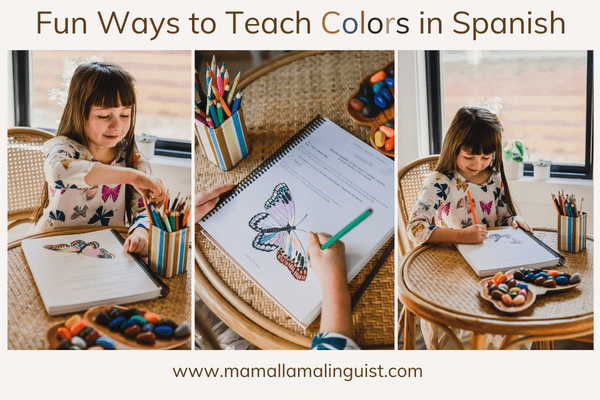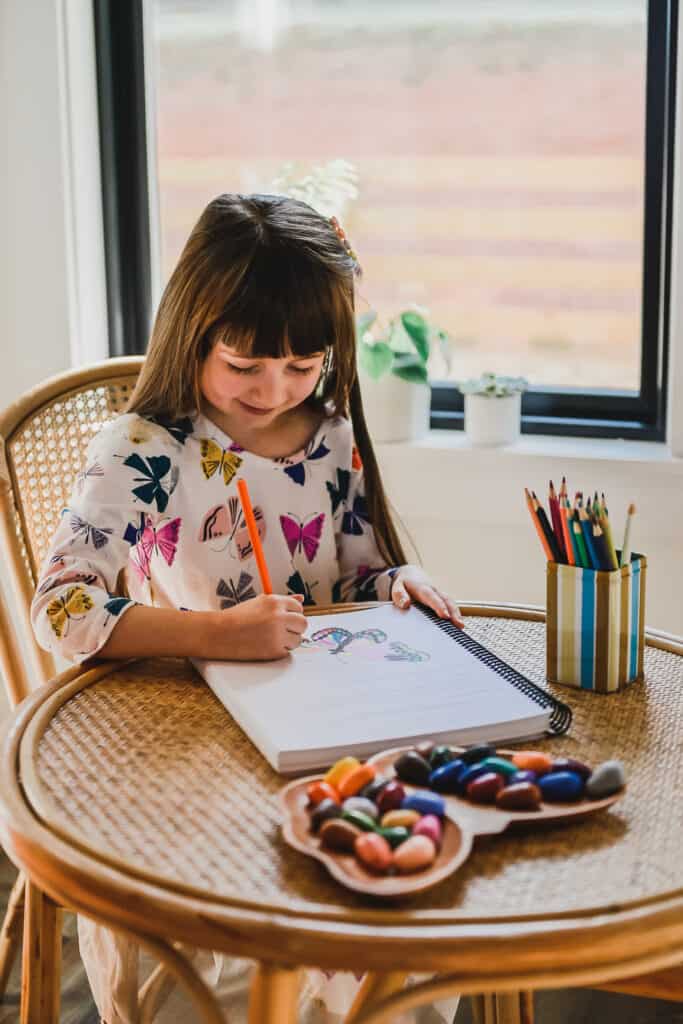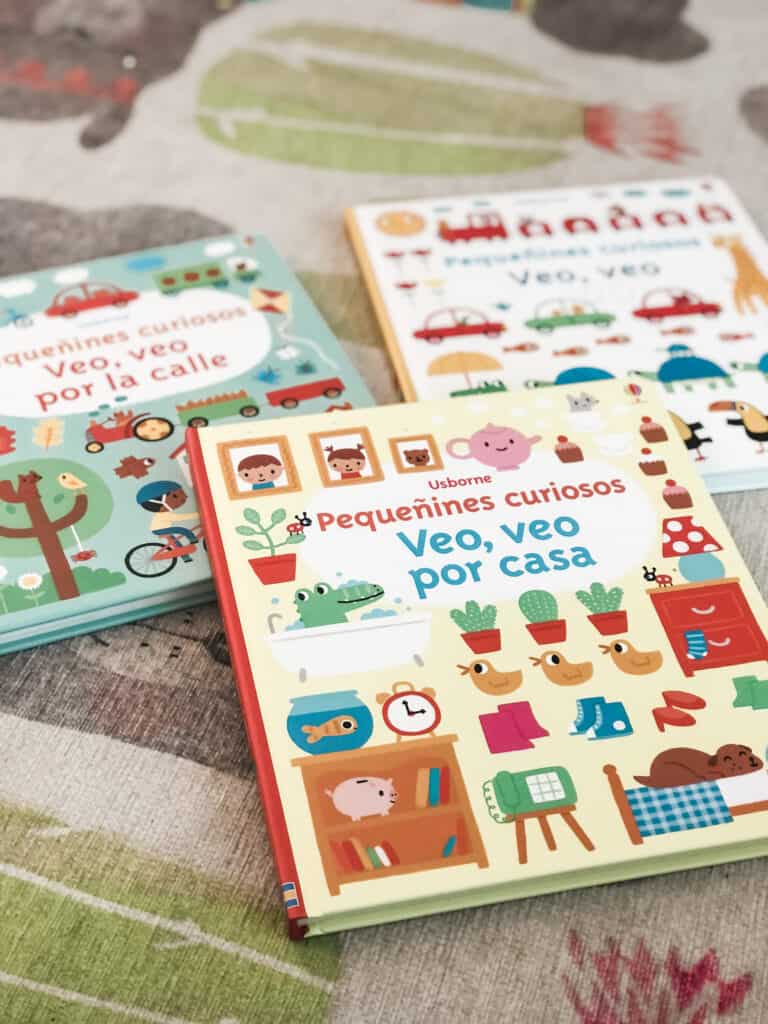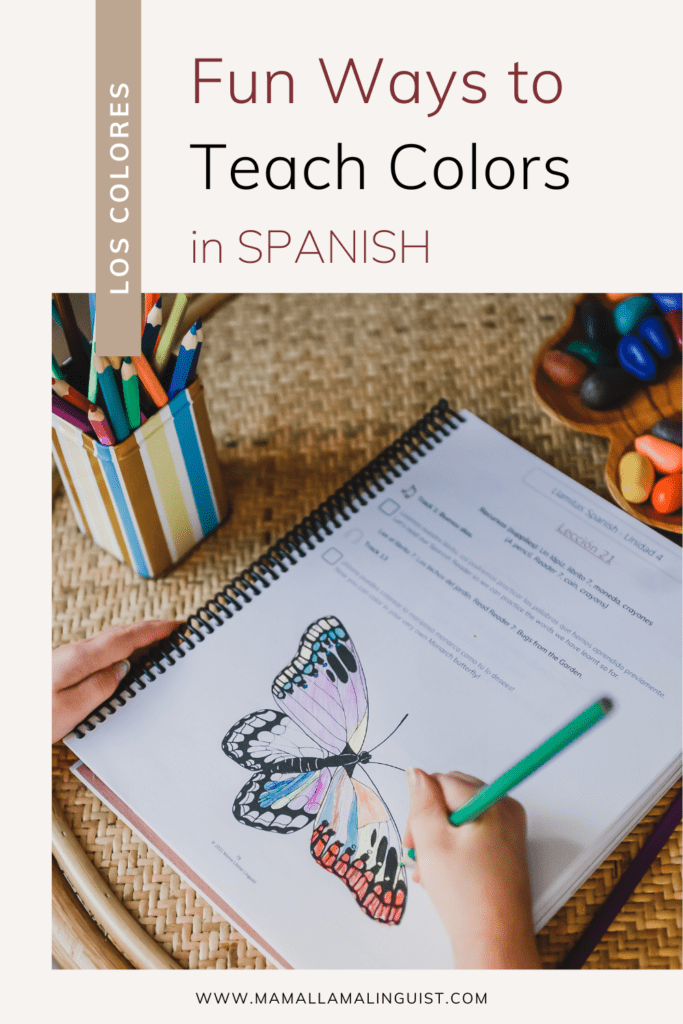In this post: Take note of all the resources and fun activities you can use to teach your kids colors in Spanish.
This post contains affiliate links. As an Amazon associate I earn from qualifying purchases.
One of the fundamental preschool skills is learning colors. Teaching colors is also a great way to introduce kids to first words and concepts in Spanish without the overwhelm.
As I’m sure we’ve all experienced, the question ‘What’s your favorite color?’ seems to be an age-old icebreaker and conversation staple. So why not give your kids the opportunity to respond in two languages?
One of the best ways to get them on board and well on their way to bilingualism is by making learning fun, relatable and engaging. That’s exactly what we’ll be covering in today’s post.
Related post: How to Add a Foreign Language to Your Homeschooling
Table of Contents
FREE Color Flashcards in Spanish
Here at Mama Llama Linguist, we’re huge fans of using Spanish flashcards to support language learning. They’re interactive, easy to make and can be used in a variety of ways. What’s not to love?
In our freebie library, you’d find flashcards on a number of topics including counting, animals, (topic), and yup you guessed it, colores (colors). All our flashcards also include native speaker audio tracks to support pronunciation.
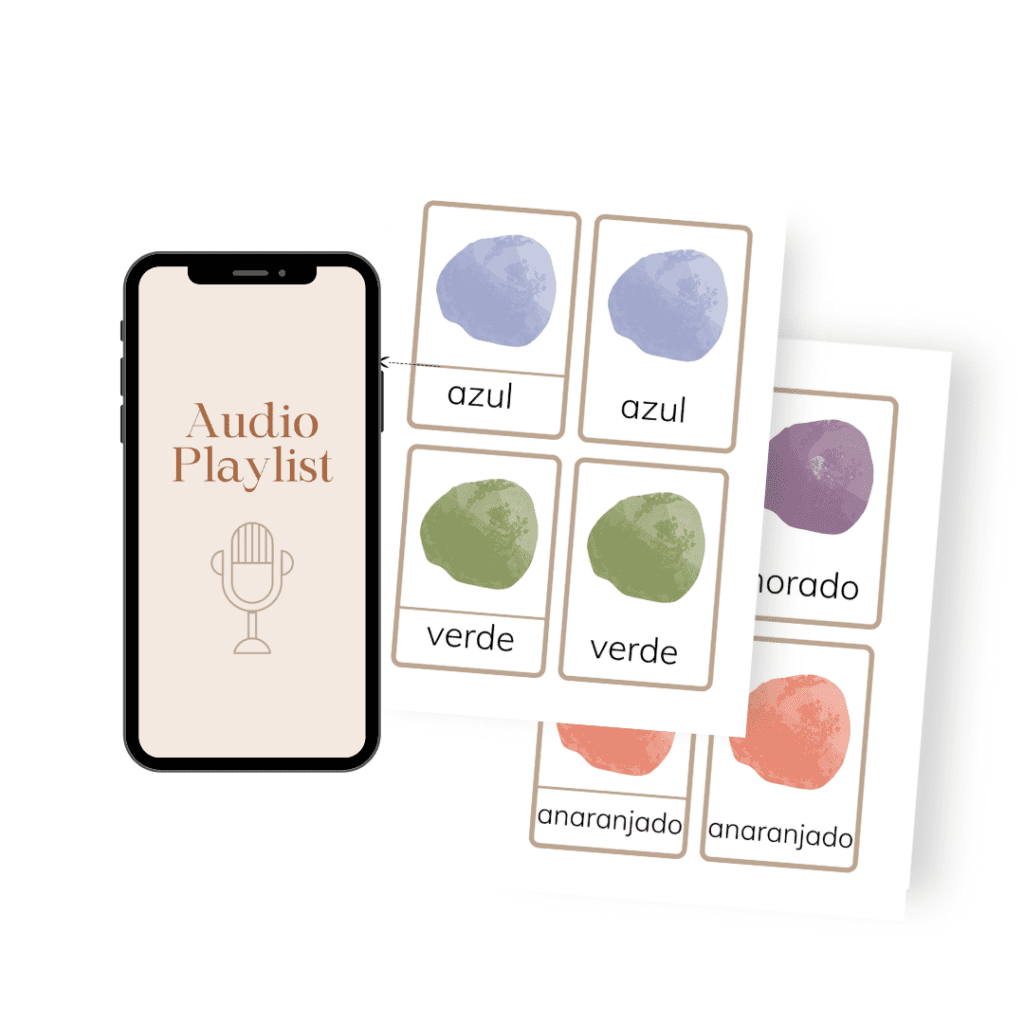
Get immediate access to these cards and every resource in our Freebie Library by subscribing to our email list. There are absolutely no membership fees and you can unsubscribe at any time.
Using the Colors in Spanish
Once you’ve used our flashcards to teach your kids the colors in Spanish and the pronunciation, they’re ready for the next step. That is, the correct way to use colors in Spanish according to the grammar rules.
There are 2 main rules you ought to note. Firstly, as you may already know, all nouns in Spanish have a gender, either masculine or feminine. Apart from some exceptions, masculine words typically end in -o while feminine words end in -a.
When using adjectives, in this case, colors, the gender of the noun and the adjective must be the same.
Secondly, adjectives are always positioned AFTER the noun and not before the noun as we are used to doing in English. Now, let’s take a look at an example so this will all make perfect sense.
Here’s how you would write the phrase ‘the purple butterfly’ in Spanish:
The – la
Purple – morado
Butterfly = mariposa (feminine)
The purple butterfly – la mariposa morada
Note how the adjective ‘morada’ is placed after the noun ‘butterfly’ and the genders match so they both end with the letter ‘a’.
When it comes to the exceptions we mentioned earlier, some words end in a consonant for both the masculine and feminine form. In the case of colors, some of these include azul, verde and gris.
This may take some getting used to at first but both you and your kids will soon get the hang of it. Along with your flashcards, use the table below as a helpful guide to using the colors in Spanish.
| Color (English) | Color (Spanish) | Masculine | Feminine |
| purple | morado/púrpura | morado/púrpura | morada/púrpura |
| orange | anaranjado | anaranjado | anaranjada |
| yellow | amarillo | amarillo | amarilla |
| pink | rosa/rosado | rosa/rosado | rosa/rosada |
| black | negro | negro | negra |
| white | blanco | blanco | blanca |
| red | rojo | rojo | roja |
| brown | marrón/café | marrón/café | marrón/café |
| grey | gris | gris | gris |
| blue | azul | azul | azul |
| green | verde | verde | verde |
Fun fact: When referring to the color ‘orange’ we use the word ‘anaranjado’, however, when referring to the fruit we say ‘naranja’.
Fun Ideas to teach Spanish Colors
Activities such as crafts and games work well when introducing a new topic. Not only are they fun but they allow you greater flexibility and the chance to structure learning around major themes.
This helps to reinforce the concepts and skills learned in a context that’s relatable. It’s called thematic instruction and is actually one of the best ways for kids to learn.
With that said, here are some fun ideas you can use to teach the colors in Spanish:
- Rainbow craft: On one sheet of paper, write the colors of the rainbow in semi-circles in the order in which they appear. Then, have the kids cut colorful strips of construction paper to match and glue them on the respective spot.
- Group los colores: Make your own classifying exercise by using manipulatives of different colors. Label boxes or designated areas with a particular color in Spanish. Mix the manipulatives altogether and have kids place them in the correct spot based on the color.
- Veo, Veo: Translated to English as ‘I Spy’, this game can be used to help children practice their pronunciation of colors when naming what they see eg. ‘veo veo algo ROSA’ and help recall vocabulary by identifying if they guess items of the right color. Put your twist on the game by asking kids to find objects of a particular color and present them to you. Use phrases such as ‘Busca algo verde’ – look for something green or ‘Tráeme algo azul’ – bring me something blue.
- Interactive Flashcard fun: Use these rainbow vocabulary bilingual flashcards by Habbi Habbi to learn colors as well as the names of animals, foods, objects and more in the many colors of the rainbow. If you purchase their reading wand, you’ll also be able to tap the cards to hear the pronunciation.
Spanish Books About Colors
Here are a couple of our top recommendations for books when it comes to teaching colors.
For toddlers
1. Singing / Cantando de Colores: A Bilingual Book of Harmony:
This picture book by Lil’ Libros is inspired by a Spanish folk song ‘De Colores’. In addition to learning the colors in Spanish, it’s a great cultural experience. Listen to the song here so you can sing along.
2, Zapata:
Using phrases related to the life of Emiliano Zapata, a prominent figure during the Mexican revolution, this bilingual book introduces kids to colors.
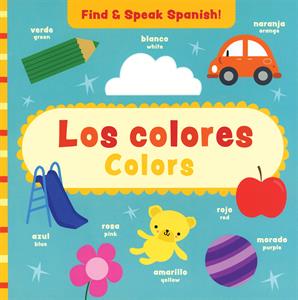
A beautiful bilingual board book with bright illustrations and perfect for practicing adjectival agreements (with masculine and feminine nouns).
For ages 4 +
1. El gran libro de los colores:
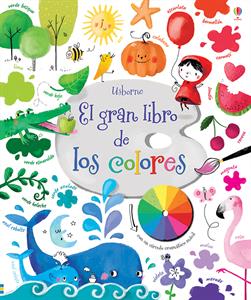
A stunning hardback title with dozens more colors beyond the ones we have learnt above. This is a deep dive into the world of colors and there is a fun color wheel included too.
2. Su propio color:
Translated in English as ‘A Color of His Own’, this book explores the idea that all animals have their own color except for chameleons whose colors can change.
This mixed language book is full of beautiful colores and a boy with a talent for art! It’s full of rhyme which makes for an upbeat storytelling experience.
Related Post: Best Children’s Spanish Books for Beginners
Preschool Videos about Colors in Spanish
Canticos: Enjoy this take on the popular folk song ‘De Colores’ which we mentioned earlier. You and your kids can sing along to the English version then challenge yourself to sing the Spanish and soon you’ll be able to do both.
Rockalingua: If your kids have already learned numbers 1 to 10, this song will be a perfect way for them to practice along with helping them to learn the colors in Spanish. For those who are yet to introduce numbers, be sure to check out our blog, Counting in Spanish Made Easy.
Super Simple Español: If you’re just getting started or teaching younger kids, this video is ideal. Get ample practice with 4 colors, azul, amarillo, rojo and morado before moving on to others.
Baile de los colores: The catchy beat of this song by José Luis Orzoco is just 1 minute long but is guaranteed to have you dancing while learning.
123 Andrés: This song is for more advanced learners but is still at a moderate pace which makes it easy to follow along. The lyrics are more than just colors so you’d also learn some new words.
Related Post: Canciones Infantiles / Spanish Songs for Kids on YouTube
Llamitas Spanish Curriculum
For even more resources, you’d be happy to know that we offer the Pre-K Spanish Morning Binder which is a great starter pack including colors, shapes, weather, numbers 1-20 and the alphabet.
Enjoy this series of short, bite-sized 15-minute daily lessons that are easy to implement. It’s great for ages 2-6 or those wanting a gentle first step to teaching Spanish.
For a complete program for Preschool and Kindergarten, we offer the full-year Llamitas Spanish Curriculum with plenty of opportunities to practice colors with music, games, worksheets, coloring pages and more! Enroll today.
By now I hope you have an answer (in Spanish) to the age-old question I mentioned earlier, ¿Cuál es tu color favorito?
Related Posts:

